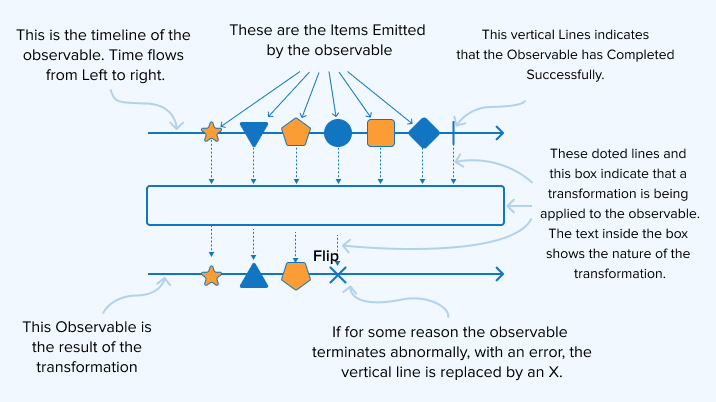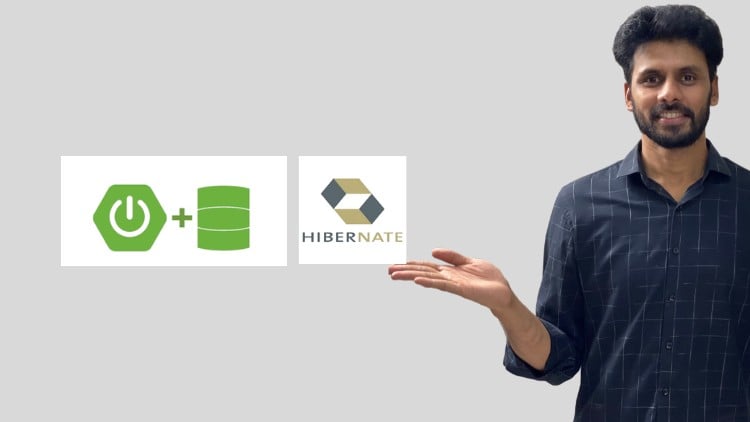The Java ecosystem is in a constant state of evolution, driven by the relentless demand for more scalable, resilient, and efficient applications. At the heart of this evolution is the paradigm shift towards reactive programming. As frameworks like Spring WebFlux and Quarkus champion non-blocking I/O at the web layer, a critical question arises: how do we handle the database, traditionally the most significant source of blocking I/O? The answer is reactive persistence, and a key player in this space is Hibernate Reactive. With the latest developments, such as the recent release of Hibernate Reactive 4.1, developers now have an even more powerful and mature toolset to build fully asynchronous applications from the web endpoint down to the database row. This article explores the core concepts of Hibernate Reactive, dives into the practical implementation of its latest features, discusses advanced techniques, and outlines best practices for building high-performance, non-blocking data access layers. This is essential reading for any developer keeping up with the latest Hibernate news and the broader trends in Reactive Java news.
Understanding the Reactive Shift and Hibernate’s Role
Before diving into code, it’s crucial to understand why reactive persistence matters. In a traditional, blocking model, when an application thread executes a database query, that thread is blocked, waiting for the database to respond. It consumes system resources without doing any useful work. In a high-concurrency environment, this leads to thread exhaustion and scalability bottlenecks. The reactive model flips this on its head. Instead of blocking, a request to the database returns a “future” or “publisher” (like a Uni or Multi in Mutiny). The application thread is immediately freed to handle other requests. When the database operation completes, it emits an event with the result, which is then processed by a handler on a (potentially different) thread. This non-blocking approach allows an application to handle a massive number of concurrent requests with a small, fixed number of threads, dramatically improving resource efficiency and scalability.
Core Components: Mutiny and the Reactive Session
Hibernate Reactive extends the familiar Hibernate ORM with a reactive API, primarily through the SmallRye Mutiny library. It doesn’t reinvent the wheel; instead, it leverages Hibernate’s powerful mapping, querying, and lifecycle management capabilities and exposes them through a non-blocking interface. The two central interfaces you’ll work with are:
Mutiny.SessionFactory: The reactive equivalent of the standardSessionFactory. It’s a thread-safe object, created once per application, used to open reactive sessions.Mutiny.Session: The reactive counterpart to theSession. It is not thread-safe and represents a single unit of work with the database. All persistence operations (persist, find, merge, remove, query) are performed through this interface and return Mutiny types.
To begin, your entities look exactly the same as they would in traditional Hibernate ORM. Hibernate Reactive uses the same JPA annotations for mapping. This is a significant advantage, as it lowers the barrier to entry for developers already familiar with JPA and Hibernate. Here is a simple entity we will use in our examples:
import jakarta.persistence.Entity;
import jakarta.persistence.Id;
import jakarta.persistence.GeneratedValue;
import jakarta.persistence.GenerationType;
import jakarta.persistence.Column;
@Entity
public class Product {
@Id
@GeneratedValue(strategy = GenerationType.IDENTITY)
private Long id;
@Column(unique = true, nullable = false)
private String name;
private double price;
// Constructors, getters, and setters omitted for brevity
public Product() {}
public Product(String name, double price) {
this.name = name;
this.price = price;
}
// Getters and setters...
public Long getId() { return id; }
public void setId(Long id) { this.id = id; }
public String getName() { return name; }
public void setName(String name) { this.name = name; }
public double getPrice() { return price; }
public void setPrice(double price) { this.price = price; }
@Override
public String toString() {
return "Product{" +
"id=" + id +
", name='" + name + '\'' +
", price=" + price +
'}';
}
}Implementing Reactive Persistence with Hibernate Reactive 4.1
Getting started with Hibernate Reactive involves setting up your project dependencies and configuration. This is where the latest Maven news and Gradle news become relevant, as you’ll need to add the appropriate artifacts for Hibernate Reactive and a compatible reactive database driver.
Project Configuration

You’ll need the hibernate-reactive-core dependency and a reactive driver for your database of choice. The Vert.x reactive drivers are a popular and robust option. For a PostgreSQL database, your configuration in persistence.xml would look something like this. Note the use of ReactivePersistenceProvider and the reactive-specific properties.
<?xml version="1.0" encoding="UTF-8"?>
<persistence xmlns="https://jakarta.ee/xml/ns/persistence"
xmlns:xsi="http://www.w3.org/2001/XMLSchema-instance"
xsi:schemaLocation="https://jakarta.ee/xml/ns/persistence https://jakarta.ee/xml/ns/persistence/persistence_3_0.xsd"
version="3.0">
<persistence-unit name="my-reactive-unit">
<provider>org.hibernate.reactive.provider.ReactivePersistenceProvider</provider>
<class>com.example.Product</class>
<properties>
<!-- Database connection details -->
<property name="jakarta.persistence.jdbc.url"
value="vertx-reactive:postgresql://localhost:5432/mydatabase"/>
<property name="jakarta.persistence.jdbc.user" value="user"/>
<property name="jakarta.persistence.jdbc.password" value="password"/>
<!-- Hibernate properties -->
<property name="hibernate.dialect" value="org.hibernate.dialect.PostgreSQLDialect"/>
<property name="hibernate.hbm2ddl.auto" value="create-drop"/>
<property name="hibernate.show_sql" value="true"/>
<property name="hibernate.format_sql" value="true"/>
<!-- Connection pool size -->
<property name="hibernate.connection.pool_size" value="10"/>
</properties>
</persistence-unit>
</persistence>Performing Asynchronous CRUD Operations
Once configured, you can obtain a Mutiny.SessionFactory and perform operations. All operations are non-blocking and return a Uni<T> (for a single or no result) or a Multi<T> (for a stream of results). The key is to chain operations using Mutiny’s rich operator API rather than blocking to wait for a result. Notice the use of session.withTransaction(...), which is the standard way to ensure atomicity for a sequence of reactive operations.
import org.hibernate.reactive.mutiny.Mutiny;
import jakarta.persistence.Persistence;
import io.smallrye.mutiny.Uni;
public class ProductService {
// SessionFactory should be created once and reused
private final Mutiny.SessionFactory sessionFactory;
public ProductService() {
this.sessionFactory = Persistence
.createEntityManagerFactory("my-reactive-unit")
.unwrap(Mutiny.SessionFactory.class);
}
public Uni<Product> createAndFindProduct(String name, double price) {
Product newProduct = new Product(name, price);
// Chain of reactive operations
return sessionFactory.withTransaction(session ->
// 1. Persist the new product
session.persist(newProduct)
// 2. After persisting, flush the session to ensure the ID is generated
.then(session::flush)
// 3. Then, find the product by its generated ID
.chain(() -> session.find(Product.class, newProduct.getId()))
);
}
public static void main(String[] args) {
ProductService service = new ProductService();
System.out.println("Creating product...");
// Subscribe to the Uni to trigger the operations and handle the result
service.createAndFindProduct("Reactive SSD", 129.99)
.subscribe().with(
product -> System.out.println("Found product: " + product),
failure -> System.err.println("Operation failed: " + failure)
);
// In a real app, you wouldn't block, but for this demo, we wait.
try {
Thread.sleep(2000);
} catch (InterruptedException e) {
e.printStackTrace();
}
}
}Advanced Techniques and Querying
Beyond basic CRUD, real-world applications require complex queries, bulk operations, and careful performance management. The latest Hibernate news often highlights improvements in these advanced areas, reflecting the maturity of the reactive ecosystem. This is especially relevant in the context of modern Java versions, as seen in Java 17 news and Java 21 news, which provide underlying JVM improvements that benefit high-throughput reactive applications.
Reactive HQL and Criteria Queries
Hibernate Reactive fully supports HQL, JPQL, and Criteria queries. The key difference is that query execution returns a reactive type. A query expected to return a single result will produce a Uni, while a query returning multiple results will produce a Multi, which you can process as a stream.
import org.hibernate.reactive.mutiny.Mutiny;
import io.smallrye.mutiny.Multi;
import io.smallrye.mutiny.Uni;
import java.util.List;
// ... inside ProductService class
public Multi<Product> findProductsInPriceRange(double min, double max) {
return sessionFactory.withSession(session ->
session.createQuery("FROM Product p WHERE p.price BETWEEN :min AND :max", Product.class)
.setParameter("min", min)
.setParameter("max", max)
.getResultList()
.onItem().transformToMulti(list -> Multi.createFrom().iterable(list))
);
}
public Uni<Long> countAllProducts() {
return sessionFactory.withSession(session ->
session.createQuery("SELECT COUNT(p.id) FROM Product p", Long.class)
.getSingleResult()
);
}
// Example usage
public void runAdvancedQueries() {
System.out.println("Finding expensive products...");
findProductsInPriceRange(100.00, 500.00)
.subscribe().with(
product -> System.out.println("Found: " + product),
failure -> System.err.println("Query failed: " + failure),
() -> System.out.println("Product stream complete.")
);
countAllProducts()
.subscribe().with(
count -> System.out.println("Total products: " + count)
);
}Stateless Sessions for Bulk Operations
For high-performance scenarios like data ingestion or bulk updates, the overhead of a stateful session (with its first-level cache and dirty checking) can be unnecessary. Hibernate Reactive provides the Mutiny.StatelessSession for this purpose. It offers a more direct, command-oriented API that bypasses the persistence context, leading to lower memory consumption and potentially faster execution for batch operations. This is a critical tool for optimizing Java performance news within your persistence layer.
import org.hibernate.reactive.mutiny.Mutiny;
import io.smallrye.mutiny.Uni;
import java.util.Arrays;
import java.util.List;
// ... inside ProductService class
public Uni<Void> insertProductsInBulk(List<Product> products) {
// Using a stateless session for high-performance bulk inserts
return sessionFactory.withStatelessTransaction((statelessSession, tx) -> {
Uni<Void> lastOp = Uni.createFrom().voidItem();
for (Product product : products) {
// Chain insert operations sequentially
lastOp = lastOp.chain(() -> statelessSession.insert(product));
}
return lastOp;
});
}
// Example usage
public void runBulkInsert() {
List<Product> newProducts = Arrays.asList(
new Product("Reactive Keyboard", 75.50),
new Product("Reactive Mouse", 45.00),
new Product("Reactive Monitor", 399.99)
);
System.out.println("Performing bulk insert...");
insertProductsInBulk(newProducts)
.subscribe().with(
item -> System.out.println("Bulk insert successful!"),
failure -> System.err.println("Bulk insert failed: " + failure)
);
}Best Practices and Optimization

Adopting Hibernate Reactive is more than just changing method signatures; it requires a shift in mindset. Here are some critical best practices to ensure you get the most out of your reactive persistence layer.
Embrace the Reactive Chain
The Golden Rule: Never Block. The most common pitfall is breaking the reactive chain by calling a blocking method like .await().indefinitely() inside your application logic. This defeats the entire purpose of using a reactive framework, as it will tie up one of the few precious event-loop threads. All logic that depends on the result of a database call must be placed inside a reactive operator (e.g., .onItem().transform(...), .chain(...)).
Transaction Management
Always use the sessionFactory.withTransaction(...) or sessionFactory.withSession(...) helpers. They correctly manage the lifecycle of the session and transaction, ensuring that resources are properly opened and closed and that transactions are committed or rolled back. Manually managing reactive transactions is complex and error-prone.
Connection Pool Sizing
Unlike traditional blocking applications that often require large thread pools (and thus large connection pools), reactive applications operate with a small number of event-loop threads. Your database connection pool should be sized accordingly. A smaller pool (e.g., 10-20 connections) is often sufficient to serve a very high number of concurrent application requests, leading to better resource utilization on both the application server and the database server.
Testing Your Reactive Code
Testing reactive code requires a slightly different approach. Libraries like Awaitility can be helpful for waiting on asynchronous results in your tests. When writing tests with frameworks like JUnit, you’ll need to subscribe to your reactive streams and assert the results within the subscriber’s callback. The Mutiny library also provides a dedicated testing artifact, mutiny-assertj, which offers fluent assertions for Uni and Multi.
Conclusion: The Future is Non-Blocking
Hibernate Reactive 4.1 stands as a testament to the maturation of the reactive programming model within the Java ecosystem news. By building on the solid foundation of Hibernate ORM and integrating seamlessly with reactive libraries like Mutiny, it provides a powerful, efficient, and developer-friendly path to asynchronous persistence. For applications demanding high concurrency and scalability—from microservices to data-intensive platforms—adopting a non-blocking persistence layer is no longer a niche requirement but a strategic advantage. As you explore the latest Spring news and developments in the broader Jakarta EE news landscape, it’s clear that the reactive paradigm is here to stay. By mastering tools like Hibernate Reactive, you position yourself and your applications at the forefront of modern Java development, ready to build the next generation of responsive and resilient systems.

